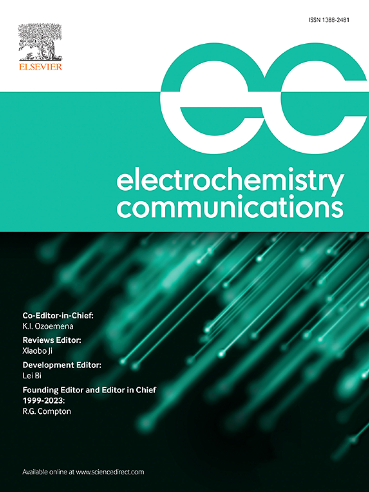使用闪光石墨烯添加剂的锂离子电池极快充电
IF 4.2
3区 工程技术
Q2 ELECTROCHEMISTRY
引用次数: 0
摘要
该电池可以在15分钟内充满80%的电量(SOC),这是缓解里程焦虑的电动汽车(ev)广泛采用的重要因素。然而,快速充电电池的实现受到复杂挑战的阻碍,包括锂离子扩散、阳极镀锂、充电协议和经济考虑。石墨烯以其优异的导电性和促进锂运输而闻名,成为快速充电电池的有希望的候选者。成本效益是一个关键的考虑因素,石墨烯生产的替代低成本方法对于快速充电电池的发展至关重要。通过拉曼表征证实,闪焦耳加热是将非晶硬碳转化为闪蒸石墨烯(FG)的一种经济有效的方法。扫描电子显微镜(SEM)表征表明,FG具有多层结构和具有较大表面积的涡层结构。随后,FG被整合到NMC811阴极中,以制造快速充电的锂离子电池。FG-NMC电池的初始比容量为173.2 mAh.g−1。极快充电(XFC)测试程序(5C下的CC-CV协议)的结果是充电时间为13分钟,存储117.6 mAh。g−1 (SOC为80.1%),满足快充标准。在极端充电(5C)和放电(5C)条件下,150次循环后的容量保持率为87.4%,这表明FG具有成为适合电动汽车应用的高能量密度快速充电电池的经济高效添加剂的潜力。本文章由计算机程序翻译,如有差异,请以英文原文为准。
Extreme fast charging of Lithium-ion batteries using flash graphene additive
The battery can be charged to 80 % of its state of charge (SOC) within 15 min, which is a significant factor contributing to the widespread adoption of electric vehicles (EVs) due to the alleviation of range anxiety. However, the realization of fast charging batteries is hindered by intricate challenges, including lithium-ion diffusion, lithium plating over the anode, charging protocols, and economic considerations. Graphene, renowned for its exceptional conductivity and facilitating lithium transport, emerges as a promising candidate for incorporation into fast-charging batteries. Cost-effectiveness is a key consideration, and alternative low-cost methods for graphene production are essential for the advancement of fast charging battery development. Flash joule heating emerges as a cost-effective approach to convert amorphous hard carbon into flash graphene (FG) as confirms by Raman characterization. Scanning electron microscopy (SEM) characterization reveals that FG exhibits a multilayer structure and a turbostratic pattern with a substantial surface area. Subsequently, FG is incorporated into the NMC811 cathode to fabricate a fast-charging lithium-ion battery. The FG-NMC battery demonstrates an initial specific capacity of 173.2 mAh.g−1. The extreme fast charging (XFC) testing procedure (CC-CV protocol at 5C) results in a charging time of 13 min stores 117.6 mAh.g−1 (SOC of 80.1 %), meeting the criteria for a fast-charging battery. The capacity retention after 150 cycles under extreme charging (5C) and discharging (5C) is 87.4 % demonstrates that FG possesses the potential to be a cost-effective additive for energy-dense fast charging batteries suitable for electric vehicle applications.
求助全文
通过发布文献求助,成功后即可免费获取论文全文。
去求助
来源期刊

Electrochemistry Communications
工程技术-电化学
CiteScore
8.50
自引率
3.70%
发文量
160
审稿时长
1.2 months
期刊介绍:
Electrochemistry Communications is an open access journal providing fast dissemination of short communications, full communications and mini reviews covering the whole field of electrochemistry which merit urgent publication. Short communications are limited to a maximum of 20,000 characters (including spaces) while full communications and mini reviews are limited to 25,000 characters (including spaces). Supplementary information is permitted for full communications and mini reviews but not for short communications. We aim to be the fastest journal in electrochemistry for these types of papers.
 求助内容:
求助内容: 应助结果提醒方式:
应助结果提醒方式:


